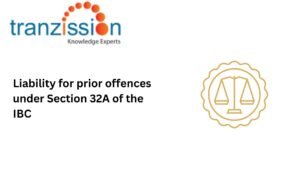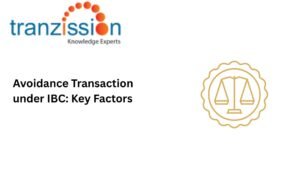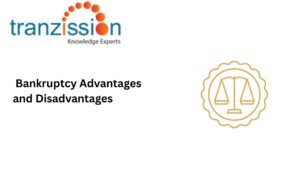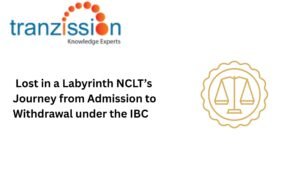
Liability for prior offences under Section 32A of the IBC
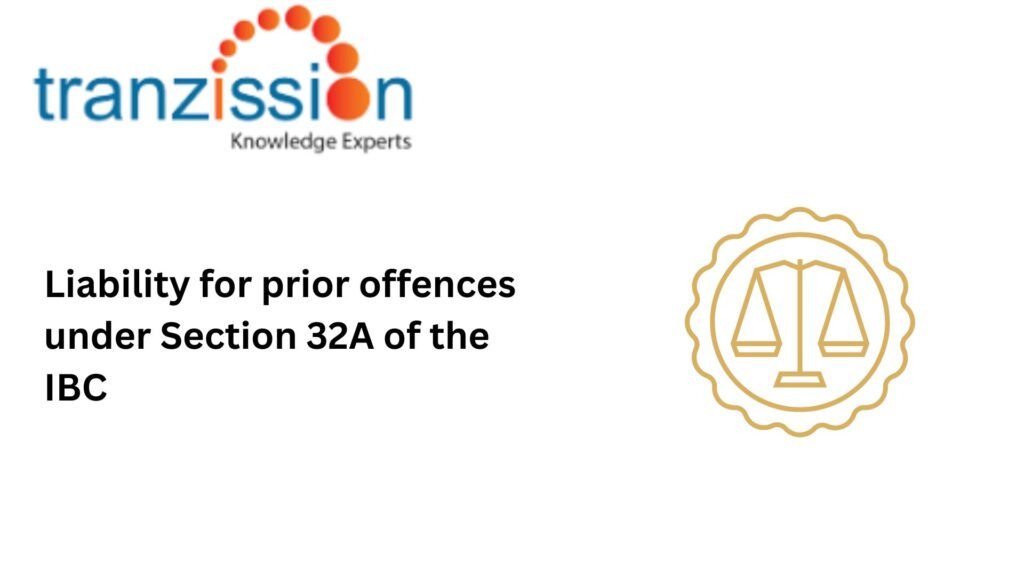
Table of Contents
Introduced through the Insolvency and Bankruptcy Code (Amendment) Act, 2020,Section 32A of the IBC, 2016 gives a “clean slate” for corporate debtors after a resolution plan is approved, offering immunity from past offenses, but only if the new management meets certain conditions and the original management is not involved. This aims to encourage resolution applicants by removing the fear of inherited liabilities while ensuring accountability for past wrong doings is not completely absolved. This provision tries to balance the IBC’s objectives of reviving stressed companies with the need to hold wrongdoers accountable.
Statutory Framework under Section 32A of the IBC
Section 32A of the IBC shield the new management and assets of a company taken over through the corporate insolvency resolution process (CIRP) from past wrongdoings, and has been explained in more detail below:
- Immunity for the Corporate Debtor: As per section 32A (1) the corporate debtor is shielded from prosecution for offenses committed before the CIRP started, upon approval of the resolution plan under section 31. Immunity is not available if the individuals who were in control of the corporate debtor before the CIRP continue to hold that position under the approved resolution.
- Immunity for Assets: Section 32A (2) of the IBC provides immunity to a corporate debtor as its assets from actions like attachment, seizure, or confiscation related to offenses committed before CIRP, which is only granted when there is a change in control of the corporate debtor under the approved plan.
- Exceptions – Persons in Default: The proviso to section 32A carves out exceptions for individuals involved in defaults and offences, meaning certain persons in default can still be held liable, such as designated partners, directors, or officers involved in offences remain prosecutable.
Legislative Intent under Section 32A of the IBC
Section 32A of the IBC was introduced to encourage resolution applicants to participate in the revival of stressed companies by offering them a “clean slate”. The 2019 Ordinance and Subsequent amendments to the IBC were aimed at encouraging investors to participate in the resolution process of stressed companies without the fear of being held liable for past offences committed by the company. It primarily aimed to remove ambiguities in the IBC and ensure smoother implementation by providing immunity to the corporate debtor from prosecution for past offences, provided a resolution plan is approved that results in a change of management or control to a person not previously involved.
Judicial Interpretations under Section 32A of the IBC
The Delhi High Court, citing Section 32A of the IBC, quashed an FIR against Gangakhed Sugar & Energy, granting the company immunity from prosecution after a resolution plan was approved under the IBC. The court emphasizes that section 32A provides immunity to a corporate debtor from prosecution for offenses committed before the commencement of the CIRP. The court has ruled that while Bhushan Power & Steel (BPSL) now owned by JSW Steel, is granted immunity from money laundering proceedings related to its pre-insolvency period, the former officers of the company will still be held liable. This decision follows the successful completion of BPSL’s insolvency resolution process under the IBC. However, the Supreme Court recently reversed the resolution process, directing liquidation, but has since ordered a status quo to allow JSW to file a review petition. Another example is that of Dunar Foods Ltd, which underwent a resolution process under the IBC. The NCLT approved a resolution plan for the company in November 2019. As a result, the Special CBI Judge in Mumbai discharged the company from criminal proceedings related to the NSEL scam.
Implications for Stakeholders under Section 32A of the IBC
The immunity under section 32A of the IBC is not absolute and has significant implications for various stakeholders:
- For Resolution Applicants: This provision primarily protects resolution applicants from being held liable for offences committed by the corporate debtor prior to the initiation of the CIRP. By removing the risk of inheriting past liabilities, section 32A encourages resolution applicants to participate in the insolvency process, leading to better valuations and successful resolutions.
- For Creditors and Investigators: The primary focus when pursuing legal actions related to financial misconduct should be on holding accountable the individuals who were directly involved in the wrongdoing, rather than newly acquired entities. This means targeting former directors, officers, and other individuals with direct responsibility for the misconduct, rather than companies that may have acquired assets or operations of the original wrong doers.
Protective Measures
- Ensuring Compliance with Section 32A: Thorough due diligence is needed to verify that any changes in the management structure or ownership are legitimate and do not circumvent the intent of section 32A. Identifying and understanding related parties, as defined by the IBC and other relevant regulations, is also crucial. Another aspect that needs to be investigated is any allegations of complicity in the events leading to the corporate debtor’s insolvency. Further, all necessary statutory filings, including those related to the resolution plan and other relevant regulatory requirements, must be completed on time.
- Drafting Resolution Plans Carefully: Resolution plans should include clauses that affirm immunity triggers and concentration with investigations. This ensures that the successful resolution applicant is shielded from past liabilities of the corporate debtor, provided they cooperate with ongoing investigations. The clauses regarding immunity and cooperation should be clear, unambiguous, and legally sound to avoid future disputes and litigation read more Insolvency Petition Procedure in India
Limitations & Ongoing Obligations
Even after a corporate debtor is granted immunity they are still obligated to cooperate fully with any ongoing investigations. This is crucial to ensure that any potential liabilities of individuals associated with the corporate debtor, such as promoters or those in management, can still be pursued. Cooperation ensures that the resolution process is not used as a shield to protect individuals who may have engaged in wrongdoing. For instance, if a corporate debtor’s promoter is suspected of money laundering, the enforcement authorities can still investigate the promoter even if the corporate debtor has been granted immunity under the IBC. The corporate debtor however, is obligated to cooperate with the investigation.
Best Practices & Takeaways
To effectively manage the insolvency process it is crucial to:
- Thoroughly reviewing and auditing all claims against the corporate debtor that arose before the commencement of the CIRP is essential
- The approved resolution plan must adhere to the provisions of the IBC, including the waterfall mechanism for distribution of assets and the priority of claims.
- Seek clarity from the NCLT on any ambiguous aspects of the plan or potential issues is crucial.
- The resolution plan should comprehensively address the implications of section 32A, clearly outlining the scope of immunity and its impact on liabilities.
Conclusion
Section 32A fosters corporate restructuring and stakeholder confidence, while maintaining accountability for responsible parties. This provision promotes a smoother, more efficient resolution process by removing the fear of legal repercussions for past actions, thereby encouraging successful resolution applicants and facilitating the revival of the corporate debtor. In addition to this, as an non-obstante provision, section 32A takes precedence over other laws, ensuring that the immunity granted is effective and not undermined by conflicting regulations.


